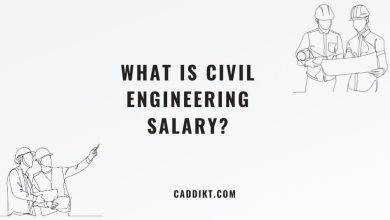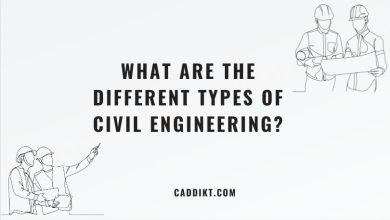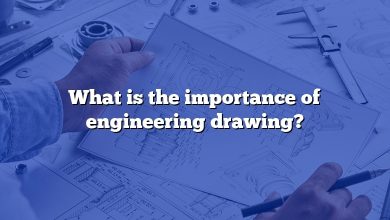Understanding the Distinctions
In the realm of urban development and design, several disciplines play crucial roles in shaping the built environment. City and regional planning, architecture, urban design, and civil engineering are integral fields that contribute to the development, management, and improvement of cities and regions. While they often intersect and collaborate, each discipline brings unique perspectives and areas of expertise to the table. This article aims to explore the differences between city and regional planning, architecture, urban design, and civil engineering, shedding light on their individual roles and responsibilities.
City and Regional Planning
City and regional planning involves the strategic and systematic analysis, design, and management of land use and infrastructure in urban and regional areas. Planners work with communities, government agencies, and other stakeholders to create sustainable and inclusive development plans that address social, economic, and environmental challenges. Their primary goal is to shape cities and regions in a way that enhances quality of life, promotes equitable access to resources, and supports long-term sustainability.
City and regional planning encompasses a wide range of tasks, including conducting research, collecting and analyzing data, forecasting population growth, facilitating public participation, developing zoning regulations, and coordinating infrastructure projects. Planners also consider factors such as transportation, housing, public spaces, economic development, and environmental conservation when formulating comprehensive plans.
Responsibilities of City and Regional Planners
City and regional planners undertake various responsibilities, including:
- Land Use Planning: They analyze current land use patterns, assess future needs, and develop plans to guide the distribution of land for different uses, such as residential, commercial, industrial, and recreational.
- Transportation Planning: Planners design transportation systems to ensure efficient movement of people and goods, while reducing congestion and environmental impacts. This includes the development of road networks, public transit systems, bike lanes, and pedestrian-friendly infrastructure.
- Environmental Planning: Planners work to protect and preserve natural resources, mitigate the effects of climate change, and promote sustainable practices. They may develop policies to manage green spaces, promote renewable energy, and address environmental hazards.
- Community Development: Planners engage with communities to understand their needs, aspirations, and concerns. They facilitate community meetings, conduct surveys, and incorporate public input into planning processes to ensure that development initiatives reflect the community’s values and goals.
- Policy Development: Planners contribute to the creation of policies and regulations that govern development activities. They may collaborate with government officials, experts, and stakeholders to draft land use ordinances, building codes, and environmental regulations.
Architecture, Urban Design, and Civil Engineering
While city and regional planning focuses on the strategic and holistic aspects of urban development, architecture, urban design, and civil engineering address more specialized aspects of the built environment. Let’s delve into each of these disciplines to better understand their roles.
Architecture
Architecture primarily deals with the design, planning, and construction of buildings and structures. Architects combine artistic vision, functional considerations, and technical knowledge to create aesthetically pleasing and functional spaces. They work closely with clients to understand their needs, preferences, and budgetary constraints, and then translate these requirements into architectural designs. Architects consider factors such as building codes, safety regulations, materials, and sustainability when developing their designs.
Urban Design
Urban design focuses on the aesthetics, functionality, and spatial organization of urban areas. Urban designers aim to create cohesive and visually appealing environments by shaping the arrangement of buildings, public spaces, streetscapes, and landscapes. Their work often involves enhancing the pedestrian experience, promoting social interaction, and fostering a sense of place within cities. Urban designers collaborate with architects, planners, landscape architects, and other professionals to develop comprehensive design strategies for transforming urban areas. They consider factors such as urban fabric, building heights, street layouts, public amenities, and the integration of natural elements to create visually appealing and functional urban spaces.
Civil Engineering
Civil engineering focuses on the design, construction, and maintenance of physical infrastructure. Civil engineers play a vital role in ensuring the functionality, safety, and sustainability of various structures, including roads, bridges, dams, water supply systems, and wastewater treatment plants. Their work involves analyzing site conditions, conducting feasibility studies, developing engineering designs, and overseeing construction projects. Civil engineers collaborate closely with architects, urban planners, and other professionals to ensure that infrastructure projects align with the overall urban vision and meet technical specifications.
Interdisciplinary Collaboration
While city and regional planning, architecture, urban design, and civil engineering have distinct areas of focus, successful urban development often requires collaboration and integration among these disciplines. The collective expertise of professionals from these fields can result in more holistic and effective solutions for urban challenges.
Planners work closely with architects to ensure that new developments align with the broader city or regional plan. They collaborate on issues such as building height, density, and design guidelines to maintain the desired character and functionality of the area. Planners also engage with urban designers to incorporate design principles and strategies that enhance the overall aesthetics and livability of urban spaces.
Civil engineers play a critical role in translating the plans and designs created by planners, architects, and urban designers into tangible infrastructure. Their technical knowledge and expertise in structural engineering, transportation systems, and environmental considerations contribute to the successful implementation of urban projects.
Conclusion
In summary, city and regional planning, architecture, urban design, and civil engineering are distinct yet interconnected disciplines that contribute to the development and improvement of cities and regions. While planners focus on strategic land use and comprehensive development plans, architects bring their artistic vision and technical expertise to design individual buildings. Urban designers shape the aesthetics and functionality of urban areas, while civil engineers ensure the construction and maintenance of physical infrastructure.
Through interdisciplinary collaboration, professionals from these fields can work together to create sustainable, inclusive, and visually appealing urban environments. By understanding the unique roles and responsibilities of each discipline, stakeholders can leverage their expertise to tackle complex urban challenges and shape the cities and regions of the future.








